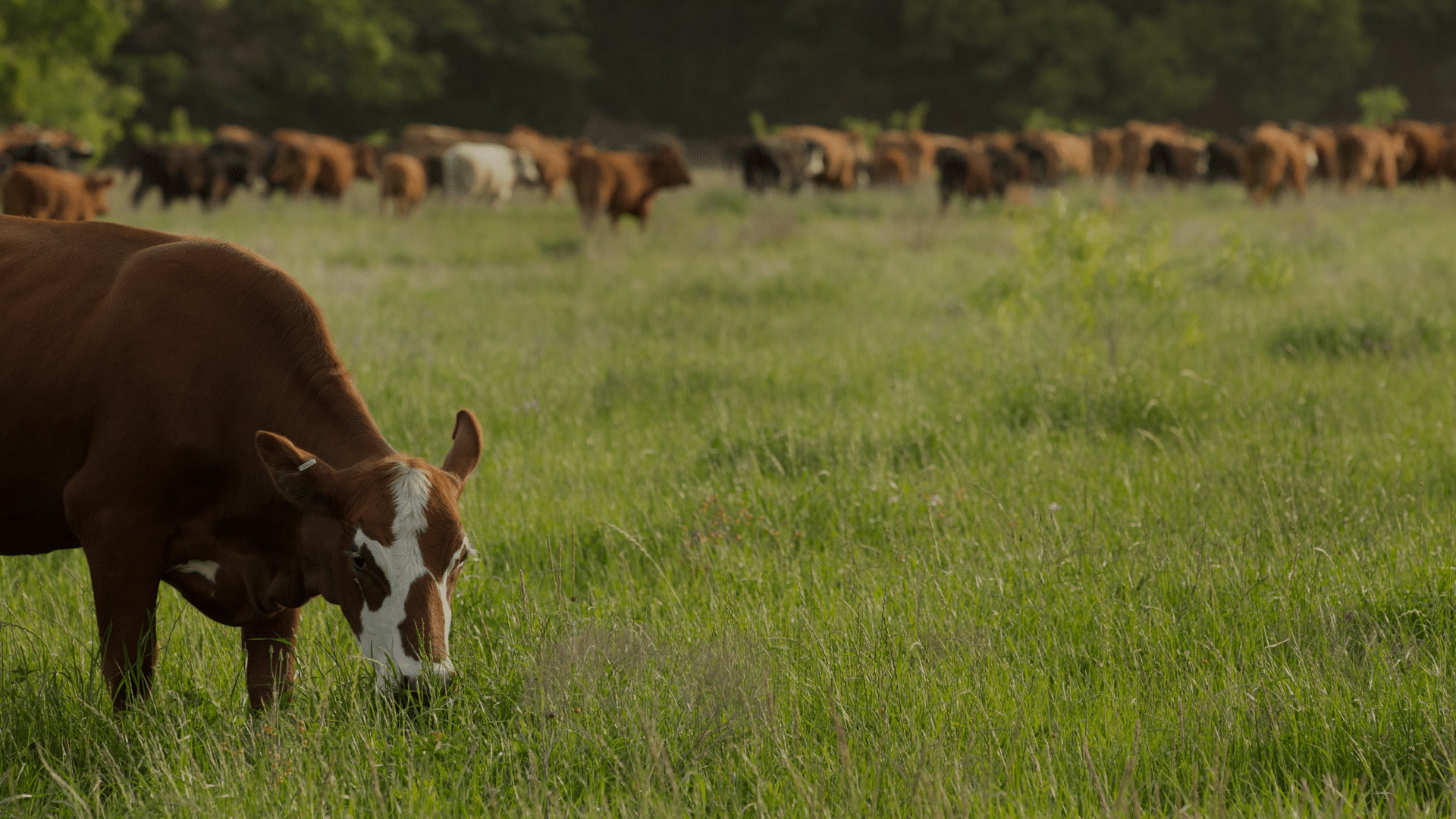Pasture Grasses for High Traffic Areas

Growing and nurturing pasture lands is one of the best ways to support a diverse ecosystem in the US. As small farming, ranching, and homesteading have grown in popularity over the last decade, many landowners are left with the puzzle of finding the best pasture grass for high traffic areas. Whether you have farm animals or domestic foragers, pasture grass for high traffic lawns is a great alternative to traditional grass seed varieties. Pasture grass can withstand foot traffic, heavy grazing, landscaping work, and other unfavorable growing conditions.
What Is a High Traffic Pasture Area?
A high traffic pasture area is a plot of land that sees a lot of animal activity. Horses, cattle, goats, sheep, pigs, chickens, and other grazing animals all benefit from pastureland, as it allows them to roam free and feed on the natural vegetation. Sometimes, these animals are put on pastures specifically to keep grass and other plants short and manageable. Either way, pasture grass for high traffic plots should be able to establish strong roots, withstand grazing activity, and self-repair when needed.
Which Pasture Grasses Withstand Heavy Grazing and Foot Traffic?
The most common types of pasture grass for high traffic areas are tall fescue and perennial ryegrass. Both varieties are durable and can adapt to a variety of growing conditions.
Tall Fescue (Endophyte-Free)
Tall fescue is a pasture grass for high traffic land that can grow 2–5 feet tall without any intervention. It’s a cool-season grass with a high tolerance for heat, shade, and drought conditions. Tall fescue is also characterized by its wide blades, dark green color, and coarse texture. When used in pastures, endophyte-free tall fescue is best.
What are Endophytes?
Endophytes are fungi that often coexist with plants, including tall fescue grass. This fungus creates a symbiotic relationship in which the plant becomes more stress-tolerant, and the fungus feeds on the energy produced by the growing grass. However, endophytes also release alkaloids that can be toxic to animals (causing problems like weight loss and low milk production), which is why endophyte-free tall fescue is the safest choice for grazing.
Perennial Ryegrass
Perennial ryegrass is another cool-season grass known for its durability. It’s not as heat- or shade-tolerant as tall fescue, but it still holds up exceptionally well compared to other cool-season grasses. Perennial ryegrass is most common in northern states and transitional growth zones, germinates quickly, and has thin, bright green blades.
This pasture grass for high traffic use is also highly nutritious. Perennial ryegrass is naturally rich in protein and acts as a good source of energy. Like tall fescue, some varieties may contain endophytes, so it’s vital to have your grass tested before putting animals like horses out to pasture.
Best Seed Mixes for Durable, High Traffic Pastures
Of course, pasture seed isn’t limited to these two popular types of grass. Pasture seed is often sold in mixes that contain other foraging plants like cowpeas, collards, wildrye, and common vetch. These plants are highly durable, help support pasture grass for high traffic areas, and provide essential nutrients to livestock animals.
Management Tips to Help Your Pasture Handle the Pressure
Even with the best pasture grass for high traffic grazing, managing your land and performing routine maintenance is still essential. To keep your plants and animals thriving, pay attention to weed growth, rotations, dragging, and overseeding.
- Watch for weeds
Weeds can decrease the nutritional value of your pasture, release toxins, and interfere with other plant growth. Use animal-safe weed control methods.
- Rotate grazing areas
One of the most important facets of pasture management is rotating and resting. Depending on the size of your lot, you may need to fence off a paddock to rest weekly, giving animals a new space to forage and allowing vegetation to self-repair.
- Drag regularly
Dragging a pasture involves pulling a chain harrow or similar tool over the land to aerate the soil and break up manure piles. Failing to drag can kill pasture vegetation and create areas of avoidance for your animals. Some people drag once a month, but your schedule will depend on your lot’s specific needs.
- Overseed as needed
In the fall, many ranch and farm owners overseed their pastures with cool-season grasses and other plants to boost vegetation and improve foraging conditions. If your pasture grass for high traffic animals is looking sparse, overseeding can help.
Build a More Resilient Ranch One Footstep at a Time
At Nature’s Seed, we understand what it takes to build land you’re proud of. Just because you have grazing animals doesn’t mean your pasture’s standards or vibrancy should suffer. With high-quality pasture seed for high-traffic land, you can build a resilient ranch, ready for anything. Browse our premium products and pamper your pasture today.
FAQs
What grass seed is good for heavy traffic?
Perennial ryegrass, tall fescue, and Kentucky bluegrass are all great pasture seed for high-traffic areas, especially if you have grazing animals.
What is the best grass for heavy grazing?
Tall fescue (endophyte-free) is a great pasture seed for heavy-grazing animals like cattle and sheep. Tall fescue is durable, drought-tolerant, and easy to establish in large plots.
How much pasture seed is needed for 1 acre?
For pasture grass seed, 15–20 lbs per acre is a standard recommendation. For other pasture crops like cowpeas, you will need more coverage—about 30–60 lbs per acre.